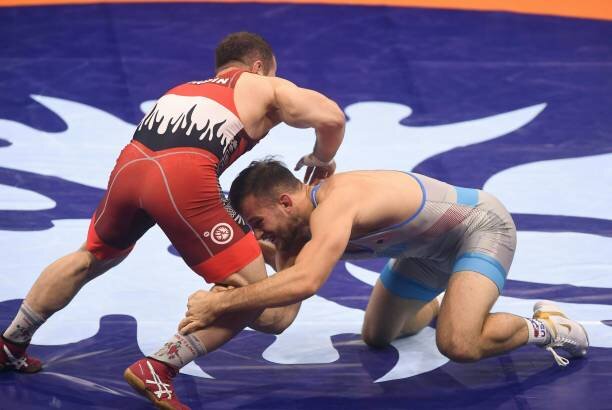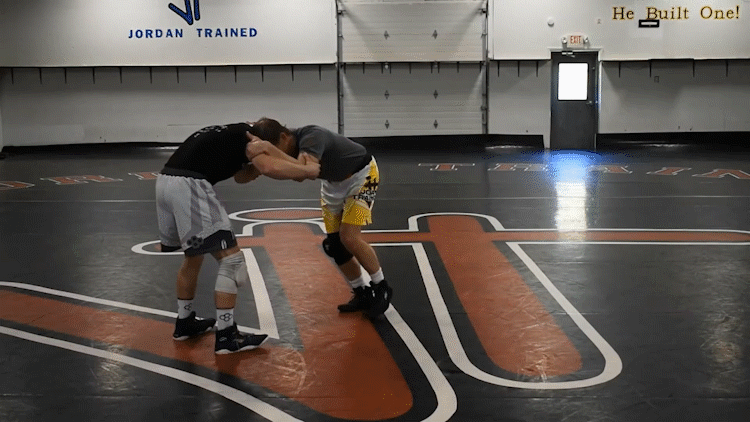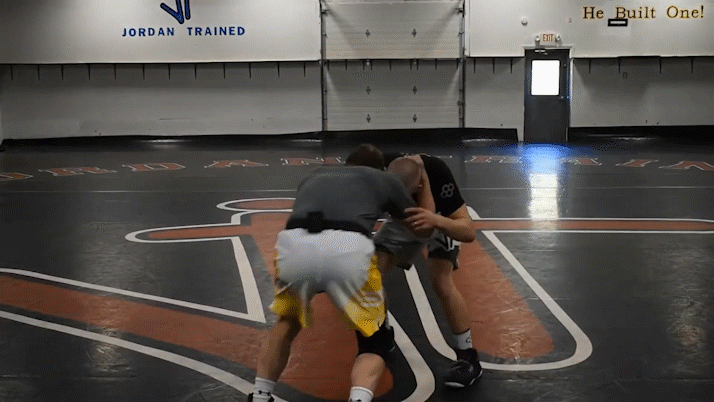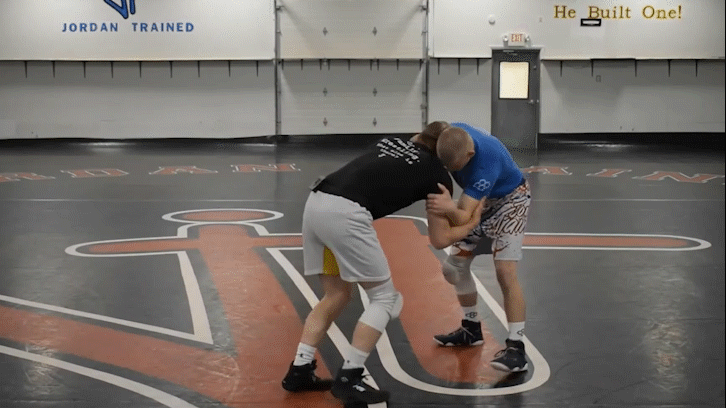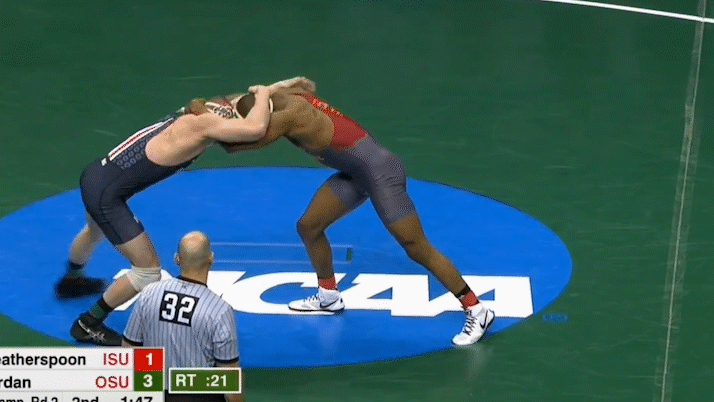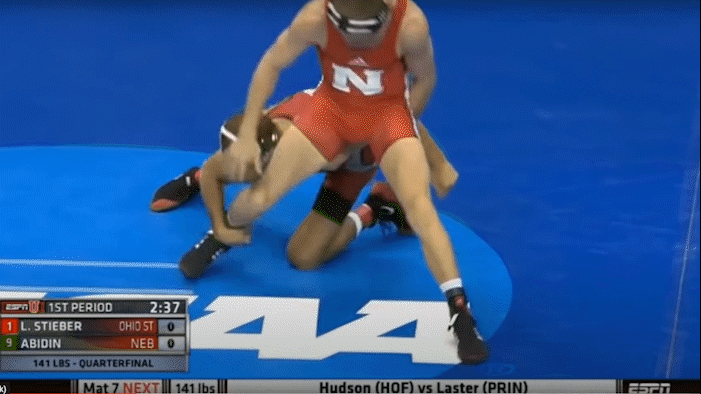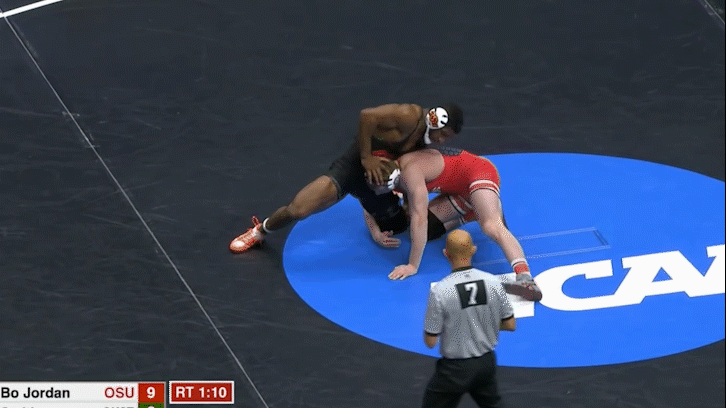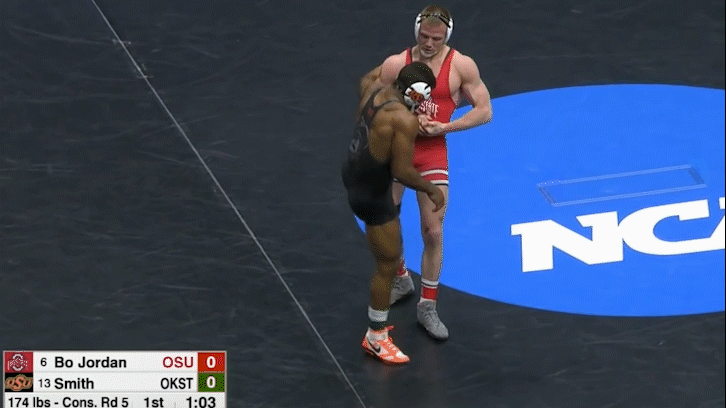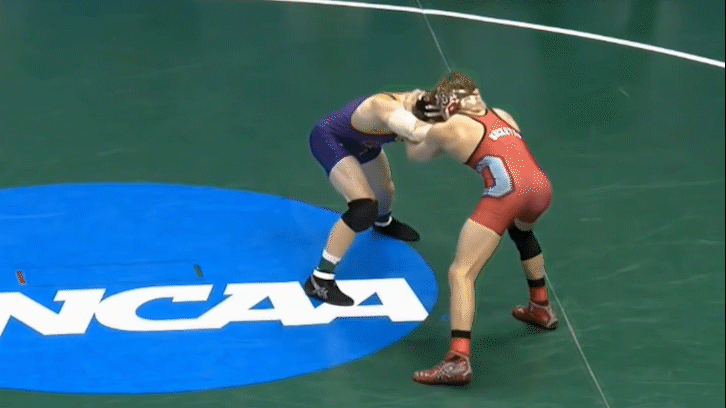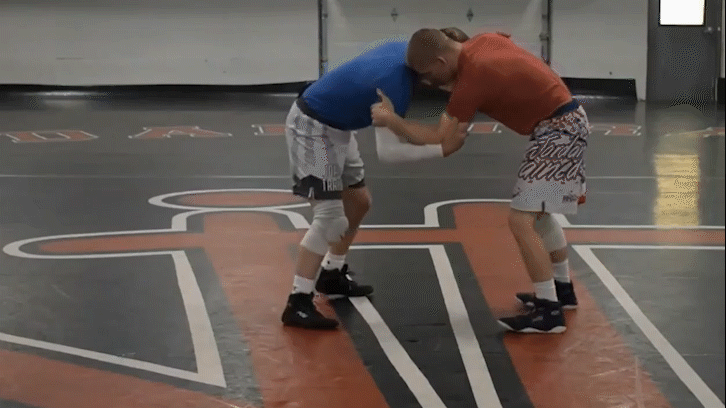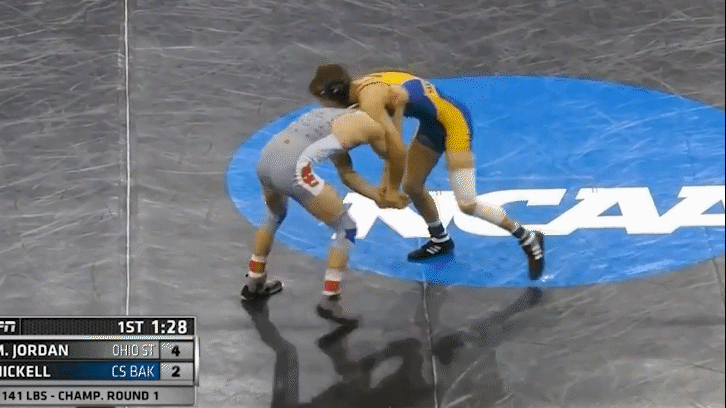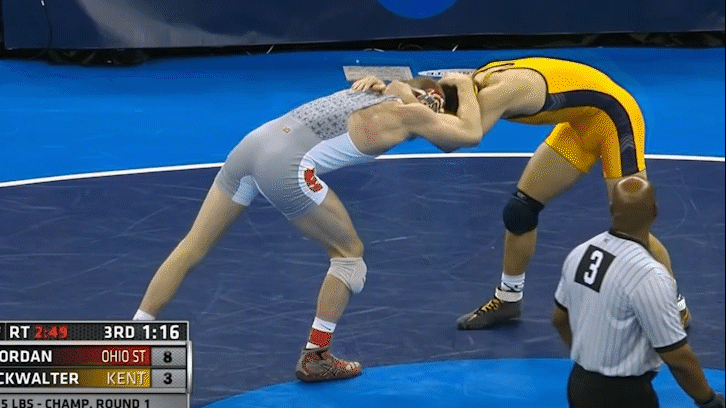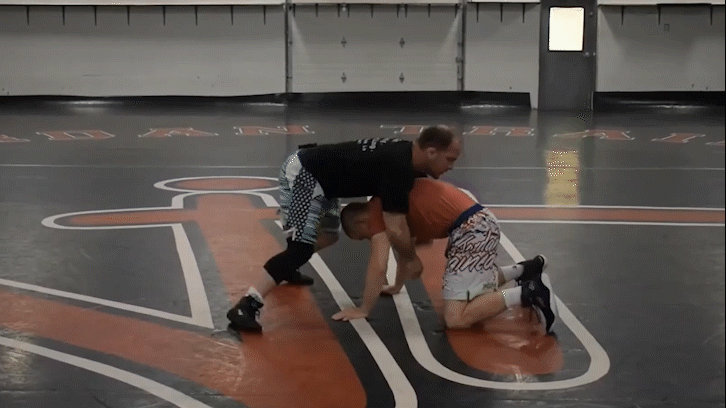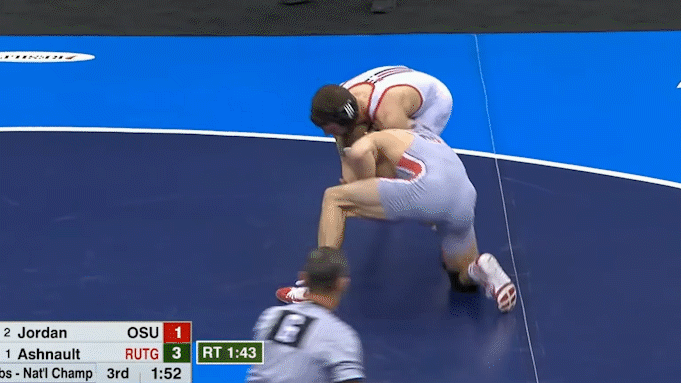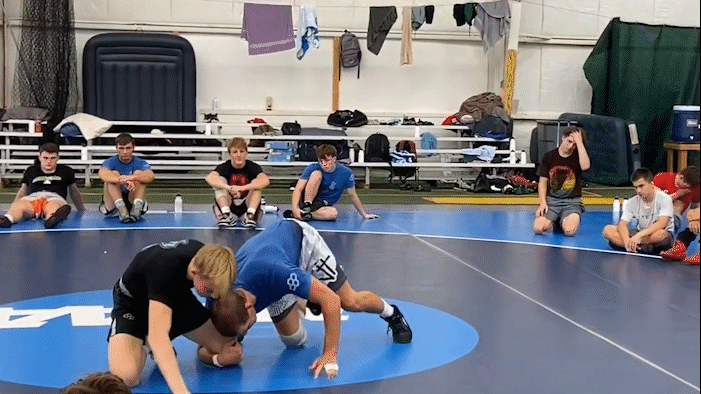The Jordan Trained Single Leg System
UWW World Champion David Taylor attempting a single leg at the 2018 World Championships (Photo by ATTILA KISBENEDEK/AFP via Getty Images)
In this article we will explore the highly effective single leg takedown system developed by Jeff Jordan, the longtime head coach of Graham High School. Before we dive into the particulars of the Jordan Trained Single Leg System, let’s first discuss the value of a systematic approach to learning wrestling techniques.
The Systematic Method
The way wrestling techniques are taught typically follows a familiar formula: the instructor teaches a technique on a cooperative opponent by demonstrating the necessary steps and details of the move. When an instructor teaches a double leg takedown, for example, he/she may show a specific set-up, particular footwork to change levels and drive inward, and a preferred way to control the opponent’s legs and finish the takedown.
Because this teaching methodology breaks techniques down into individually isolated moves, it tends to make certain assumptions that allow the technique being demonstrated to work as seamlessly as possible. Consider a single leg to dump finish (aka running the pipe): an assumption in any demonstration of this technique is that once the offensive wrestler controls the single leg he/she will be able to successfully drive to both feet. These kinds of assumptions can be useful teaching tools because they allow for the isolation of certain variables, which in turn allow a wrestler to learn a particular application of a technique.
Where this method can become problematic, however, is when it fails to provide adequate options to address variable responses from an opponent, or contingencies. Going back to the dump example, a wrestler that has only been taught to finish a single leg from both feet (with a dump or other finish) will likely have a difficult time finishing the takedown when an opponent’s well timed sprawl makes driving to both feet impractical. What is needed here is a contingency plan that allows the wrestler to quickly transition to a finishing option that can be performed on the mat. The usefulness of a contingency plan is why having a systematic approach to wrestling techniques is vital.
Under a systematic approach, individual techniques are still taught, but they are taught within the context of an overarching framework, or system. What makes a systematic approach so valuable is that, once a given system is created and organized properly, it can account for all (or at least many) of the possible contingencies that could arise against an intelligent & skilled opponent. A systematic approach can fast-track a more novice wrestler’s development and can also allow a more advanced wrestler to fine tune or even develop their own systems that fit their individual style or attributes.
Let’s further illustrate the systematic method by analyzing the single leg system developed by Jeff Jordan.
Coach Jeff Jordan
As the longtime head coach of Graham High School in St. Paris, Ohio, Jeff Jordan led his team to 17 consecutive team state titles (2002-2018), which included 79 individual state champions, and 3 team national titles. Many of the athletes who trained under Jordan went on to become successful college wrestlers, with Graham alumni accounting for over 30 Division 1 All-American awards (“All-American” status is awarded to the top 8 place winners at each weight of the Division 1 NCAA Championships). Jordan was also an accomplished wrestler himself, winning 4 state championships during his time at Graham (with a 159-1 record) and earning All-American honors twice while wrestling at the University of Wisconsin.
Some of the notable wrestlers that Jordan has coached and trained include World Champion and 2x NCAA Champion David Taylor, NCAA Champion Dustin Schlatter, 4x All-American Bo Jordan, 4x All-American Isaac Jordan, 3x All-American Micah Jordan, and current 3x All-American Alex Marinelli.
Jeff Jordan, the longtime head coach of Graham High School (now retired), led his teams to 17 consecutive team state championships and 3 team national titles.
Jordan Trained Single Leg System Overview
One of the important factors behind Graham’s dominance over so many years has been its systematic approach to technique development. Of the various offensive systems Jordan and his staff teach, the most comprehensive and thorough is undoubtedly their single leg system (which I’ll call the Jordan Trained Single Leg System, or the “JTSLS”). The beauty of the JTSLS is that, while it is in fact comprehensive and thorough, it is relatively simple to understand. Take a look at the below flow chart for an overview of how the JTSLS works.
A flowchart overview of the JTSLS
Set-Up + Angle Knee Drop
The JTSLS always begins with the below steps, regardless of the finishing option used:
(i) a tie-up (the JTSLS “default” tie-up is a left arm inside tie + a right arm collar tie, but these can vary and depend on preference);
(ii) a set-up (typically circling away from the target leg while pulling down on the opponent’s head with the collar tie just prior to the shot);
(iii) followed by a level change and what Jordan calls an “angle knee drop” penetration step (a roughly 45 degree step towards the opponent, with the knee dropping onto the mat just in front of the target foot); and
(iv) an elbow deep locked hands grip around the opponent’s target leg.
Jordan demonstrating the entry to the JTSLS. Note the tie-up (right arm collar tie, left arm inside tie), set-up (circling away from target leg and pulling down on the opponent’s head just prior to the shot), and the level change + angle knee drop penetration step.
The Three Options
Under the JTSLS, once the offensive wrestler gets control of the target leg, they have 3 options:
(i) the first and best option is to drive to both feet and quickly finish. Finishing on the feet is preferred because the offensive wrestler is in a strong position on both feet while the opponent is in a relatively weak position on one foot.
(ii) the second option - when getting to the feet is not possible - is to stay on the mat and perform the “Chase the Ankle” finish.
(iii) the third option is actually more of a catch-all category - if the first two options are not feasible, then look for another finish, such as a Cut-Back or a Peek-Out (called an “Auble” under the JTSLS), depending on how the opponent defends. Alternatively, one can simply bail and return to a neutral position.
Let’s take a closer look at each of these three options.
The First and Best Option: Drive to Both Feet and Finish
Once a wrestler has initiated a tie-up, performed a set-up and level change, locked hands around the opponent’s target leg (Jordan prefers to lock his hands behind the opponent’s knee with a gable/butterfly grip), and managed to drive to both feet, there are generally 3 preferred finishing options:
1.) the Dump;
2.) the Football Tackle; or
3.) an Armpit Lock Trip
A flowchart overview of the JTSLS finishes from the feet.
Regardless of which finishing option is used, one important rule of the JTSLS is that once on the feet, one must use continuous motion by either (i) driving into the opponent, (ii) circling back, or (iii) using a combination of the two. The purpose of this continuous motion is to keep the opponent preoccupied with maintaining their balance (rather than initiating a counter) and to keep their weight on their posting leg (which makes the target leg lighter and thus easier to control and elevate).
Jordan demonstrating the “drive in” and “circle back” motions. These two motions make it more difficult for the opponent to initiate a counter and also allow for easier transitions to the finishing options.
Dump
The Dump is useful as a finishing option, but also as a means to open up other finishes like the Football Tackle or the Armpit Lock Trips (a failed Dump serves the same purpose as the “circle back” motion). The Dump tends to work best when the defending opponent is aggressively driving into the offensive wrestler. One way to elicit such forward drive is to force them backwards with forward drive of your own - if the opponent attempts to counteract this pressure by driving back in, this makes them especially vulnerable to the sudden off-balancing effect of the Dump.
Jordan demonstrating the Dump.
Football Tackle
The Football Tackle finish is essentially a backside double leg. To perform the finish, the offensive wrestler drops their inside leg back, performs another level change, and uses their outside hand to grab the opponent’s far leg at the knee (or lower) while driving in. A good way to set-up the Football Tackle finish is to combine it with the circle back motion or a fake Dump.
Coach Jordan demonstrating the Football Tackle finish. Notice how the circle back motion (or a “fake dump”) helps set up this finish.
Bo Jordan executing the Football Tackle finish at the 2017 NCAA Championships.
David Taylor (World Champion, 2x NCAA Champion, and 4x state champ at Graham) executing the Football Tackle finish.
Logan Stieber (World Champion, 4x NCAA Champion, and longtime attendee of the Jeff Jordan State Champ Camp) executing the Football Tackle finish at the 2015 NCAA Championships.
Armpit Lock Trips
For the Armpit Lock Trips the offensive wrestler will look to wedge the opponent’s target leg (usually at the calf) in an armpit - either the inside armpit (Jordan’s preference) or the outside armpit. Once the opponent’s leg is trapped, the offensive wrestler is able to maintain relatively effortless elevation of the target leg using only one of their arms, making it a highly desirable and efficient position to finish from. Typical finishes from the Armpit Lock include front trips, back trips, and what Jordan calls the “Schultz trip” named after his former coach and mentor Dave Schultz. Below are three examples of Armpit Lock Trips performed by Bo Jordan.
Bo Jordan executing a back trip off the outside Armpit Lock. For a clean finish, Bo sweeps the opponent’s post foot out while in midair.
Bo Jordan again finishes a back trip off the outside Armpit Lock but this time uses a left arm club to assist.
Bo Jordan transitions from an ankle pick to a front trip off an inside Armpit Lock. This is a good example of how other techniques, besides the single leg, can connect with the JTSLS.
The Second Option: Stay on the Mat & Chase the Ankle
This time the offensive wrestler gets to the target leg but, perhaps due to the opponent’s well timed sprawl, does not feel confident in his/her ability to drive to the feet. Under the JTSLS the next best option is to stay on the mat and execute the Chase the Ankle finish. The Chase the Ankle finish has a ton of subtle details (which you can learn from Jordan directly in the More Resources section below) but at its core it is a go-behind. For his part, Jordan credits the Chase the Ankle finish as the technique that has won Graham more state titles than any other shot or finish.
Coach Jordan demonstrating the Chase the Ankle finish off a right arm elbow bind.
Micah Jordan executing a variation of the Chase the Ankle finish at the 2016 NCAA Championships.
The Third Option: Transition to a Different Finish or Bail
If the first and second options are unavailable for whatever reason, the third option is to either transition to a different finish or withdraw from the position and return to a neutral position on the feet. Let’s take a look at a few of these alternative finishes.
Cut-Back
One common finish in this third category is the Cut-Back, which works particularly well when the opponent begins to sprawl from their feet but has not yet managed to create distance with their hips. The Cut-Back can also work great against an opponent that attempts to counter by diving over-the-top (as illustrated in the Bo & Micah Jordan clips below). One of the key details of the Cut-Back is the pivot and direction change that force the opponent’s to fall to the hip of their controlled leg.
Coach Jordan demonstrating the Cut-Back finish. Notice how Jordan takes a big step with his left foot to perform the pivot/direction change, which ultimately forces the opponent to his left hip.
Micah Jordan executing a Cut-Back finish at the 2016 NCAA Championships.
Bo Jordan executing a Cut-Back finish at the 2016 NCAA Championships.
Auble
Another alternative finish is the Peek-Out (called an Auble in the JTSLS). The Auble is a useful option to salvage a takedown when the offensive wrestler finds himself underneath the weight of his opponent (usually via sprawl).
Micah Jordan and Graham Head Coach Travis McIntosh demonstrating an Auble drill.
Split the Middle
The Split the Middle finish has similar mechanics to the Cut-Back finish. The goal of this finish is to first slide your hips underneath the opponent’s hips (often with the aid of a hand post) while bringing your head between the opponent’s legs. Once in this “split the middle” position you want to use two hands to break the opponent down to one hip, followed by a bottom leg hook to lock the opponent’s hips in place.
Micah Jordan executing the Split the Middle finish in the 2019 NCAA Championship title match.
Closed Whizzer Counters
As with any comprehensive system, the JTSLS has adapted over the years to account for popular and effective single leg counters like the closed/shin whizzer.
Coach Jordan demonstrates a method for dealing with the Closed Whizzer.
Closing Thoughts
The JTSLS illustrates the effectiveness of a systematic approach to wrestling technique. The true value in the JTSLS is not in any one technique in particular, but is rather in how its various techniques fit together into a coherent framework that accounts for all (or nearly all) potential contingencies that can arise in the single leg position.
Once you understand what a good systematic framework looks like you can start tailoring already existing systems to your particular wrestling style or attributes, or even create your own. Remember, a system need not be overly complex, especially in its early stages of development. The key is to start simple and slowly add additional layers as you receive feedback through drilling, training, and competing.
More Resources
Jeff Jordan’s YouTube Channel: https://www.youtube.com/channel/UCzKmIk0Xfbj3KjertWoF9mw
Jeff Jordan Single Leg Techniques Playlist (from one of their 2020 summer camps): https://www.youtube.com/playlist?list=PL2sudC70Dwxd4jdPF-Ck8FhbEevqnEuWo
Explanation of how Graham wrestlers train in-season (starting at 3:10):
About the Author
Dan Sweeney is a Brazilian Jiu Jitu black belt who trains and teaches in Cleveland, OH. You can follow Dan’s wrestling breakdowns on YouTube: https://www.youtube.com/c/DPSBreakdowns or Twitter: https://twitter.com/dpsbreakdowns Dan can be contacted at dpsbreakdowns@gmail.com

